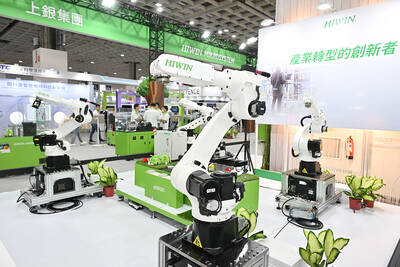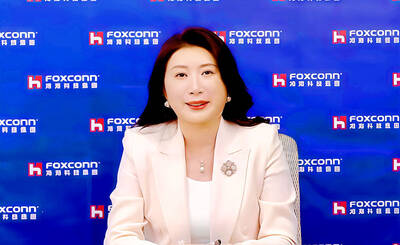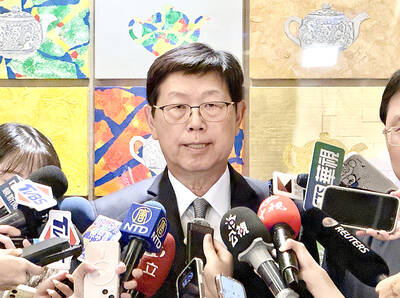Although the number of mergers and acquisitions (M&As) last year fell, the overall value surged 47 percent from a year earlier, propelled by US-China trade tensions, technological innovations and a realignment of the electronics supply chain, an annual report by PricewaterhouseCoopers (PwC) Taiwan said yesterday.
“The M&A market took a hit from the COVID-19 pandemic last year, but may regain dynamism this year, helped by sustained monetary easing by global central banks and expectations of an economic recovery from the pandemic,” Lu Ming-kuang (盧明光), chairman of the Taiwan Mergers & Acquisitions and Private Equity Council (台灣併購與私募協會), said in the report.
Taiwanese firms, especially in the tech sector, have invested in business models with growth potential and sought to increase their market share by acquiring peers at home and abroad, the report said.
This drive to prosper explains why silicon wafer supplier GlobalWafers Co (環球晶圓) bought Germany’s Siltronic AG, Fubon Financial Holding Co (富邦金控) acquired Jih Sun Financial Holding Co (日盛金控) and iPhone assembler Pegatron Corp (和碩) fully absorbed metal casing subsidiary Casetek Holdings Ltd (鎧勝控股), it said.
Catcher Technology Co Ltd (可成科技), the nation’s leading supplier of light metal casings and enclosures for mobile devices, sold two smartphone metal chassis plants to China’s Lens Technology Co Ltd (藍思科技), as it quit a sector with cutthroat competition with thin returns and searched for a new business model, the report added.
The pandemic presents challenges and opportunities to companies in information and technology supply chains and Taiwanese firms need to plan ahead five to 10 years to stay ahead of global rivals, Ennostar Inc (富采投控) chairman Lee Biing-jye (李秉傑) said in the report.
Future competition would take place between supply chains and alliances, and local firms need to understand the trend so that they can secure advantageous positions and stay competitive, Lee said.

The Taiwan Automation Intelligence and Robot Show, which is to be held from Wednesday to Saturday at the Taipei Nangang Exhibition Center, would showcase the latest in artificial intelligence (AI)-driven robotics and automation technologies, the organizer said yesterday. The event would highlight applications in smart manufacturing, as well as information and communications technology, the Taiwan Automation Intelligence and Robotics Association said. More than 1,000 companies are to display innovations in semiconductors, electromechanics, industrial automation and intelligent manufacturing, it said in a news release. Visitors can explore automated guided vehicles, 3D machine vision systems and AI-powered applications at the show, along

AI SERVER DEMAND: ‘Overall industry demand continues to outpace supply and we are expanding capacity to meet it,’ the company’s chief executive officer said Hon Hai Precision Industry Co (鴻海精密) yesterday reported that net profit last quarter rose 27 percent from the same quarter last year on the back of demand for cloud services and high-performance computing products. Net profit surged to NT$44.36 billion (US$1.48 billion) from NT$35.04 billion a year earlier. On a quarterly basis, net profit grew 5 percent from NT$42.1 billion. Earnings per share expanded to NT$3.19 from NT$2.53 a year earlier and NT$3.03 in the first quarter. However, a sharp appreciation of the New Taiwan dollar since early May has weighed on the company’s performance, Hon Hai chief financial officer David Huang (黃德才)

FORECAST: The greater computing power needed for emerging AI applications has driven higher demand for advanced semiconductors worldwide, TSMC said The government-supported Industrial Technology Research Institute (ITRI) has raised its forecast for this year’s growth in the output value of Taiwan’s semiconductor industry to above 22 percent on strong global demand for artificial intelligence (AI) applications. In its latest IEK Current Quarterly Model report, the institute said the local semiconductor industry would have output of NT$6.5 trillion (US$216.6 billion) this year, up 22.2 percent from a year earlier, an upward revision from a 19.1 percent increase estimate made in May. The strong showing of the local semiconductor industry largely reflected the stronger-than-expected performance of the integrated circuit (IC) manufacturing segment,

COLLABORATION: Softbank would supply manufacturing gear to the factory, and a joint venture would make AI data center equipment, Young Liu said Hon Hai Precision Industry Co (鴻海精密) would operate a US factory owned by Softbank Group Corp, setting up what is in the running to be the first manufacturing site in the Japanese company’s US$500 billion Stargate venture with OpenAI and Oracle Corp. Softbank is acquiring Hon Hai’s electric-vehicle plant in Ohio, but the Taiwanese company would continue to run the complex after turning it into an artificial intelligence (AI) server production plant, Hon Hai chairman Young Liu (劉揚偉) said yesterday. Softbank would supply manufacturing gear to the factory, and a joint venture between the two companies would make AI data